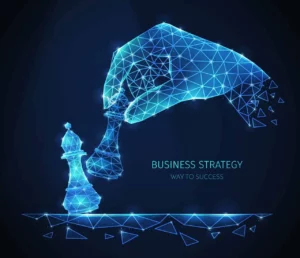In today’s business world, it’s more important than ever to be able to sell your products and services effectively. The market is crowded and competitive, and you need a proven strategy to stand out from the crowd.
Businesses of all sizes struggle with the same problem: how to best approach their customers. To be successful in the modern world, businesses need to find ways to connect with their customers and build relationships with them. This is not easy to do, especially when you consider that many people are wary of salesmen who want to sell them something.
The solution? A consultative sales approach.
A consultative sales approach emphasizes communication and understanding between two parties where the salesperson takes an active interest in the buyer’s needs. It differs from a traditional sales approach in that it doesn’t focus on convincing the customer that they need what you are selling—instead, it focuses on finding out exactly what they need and then working with them to fulfill those needs in a way that makes sense for both parties involved.
It may seem easy but putting it into practice can be challenging.
That’s where we come in. In this article, we’ll break down what consultative selling is and how you can include it in your sales approach to win more clients and increase your business.
What Is a Consultative Sales Approach?
Consultative sales is a way of selling that involves working with customers to help them make more informed buying decisions. It’s not a new approach, it’s one of the oldest in the book. The idea is that you listen carefully to your customer’s needs and then find solutions that meet those needs. Tip: Remember that you can only provide solutions if you’ve spent the time to research your clients business.
Consultative sales can be an effective way to help buyers understand their problems better and come up with better solutions for them. The problem is that many sellers don’t know how to do this well. They may have great products or services but aren’t sure how to sell them effectively because they aren’t sure what the buyer’s needs are or what questions they should be asking.
The consultative approach can be used in any industry and is especially useful for businesses that sell complex products or services, such as technology companies or financial firms.
We have seen what is meant by a consultative sales approach. Now, let’s take a look at some of the most effective consultative selling strategies that you can use to win more business.
The 6 Most Effective Consultative Sales Strategies
In any industry, certain strategies can help you sell more. As a salesperson, it’s your job to know what those strategies are and use them to your advantage.
The consultative sales approach is a powerful way to build long-term relationships with clients.
Below, we’ll go over the six most effective consultative sales strategies. By using these techniques in your daily work, you’ll be able to boost your sales, improve customer trust in your business and close more deals.
1. Ask Questions That Help You Identify Needs
One of the most important things about using this type of sales strategy is asking questions that help you identify exactly what your client’s problems and needs are. This helps ensure that you’re presenting them with a solution that will meet those needs. Asking questions also helps build rapport between you and the person you’re speaking with — which makes it easier for them to feel comfortable working with you on future projects or purchases.
Ask the right questions to uncover their needs, and then use those needs as the basis of your consultative sales approach. This will help you create a customized solution that works best for them.
For example, if your customer says they want an affordable price, ask them what they mean by that, and what is actually affordable for them, and what factors affect their decision when it comes to pricing. Maybe they want a low price because they’re on a tight budget, or maybe they want a low price because they don’t understand the value of your product or service, or don’t realise the added value that your product and service can help them. Either way, knowing what’s behind their request will help you tailor your approach accordingly.
2. Listen Carefully to The Answers
Listening is a key skill for salespeople. You need to be able to listen carefully to your customers, and it’s even more important to listen carefully when they’re talking about their needs.
A significant number of salesmen interrogate customers as though they are only doing it because they have been coached this way or they feel that they are ‘supposed to’. During the time that the prospect is providing an answer, the salesperson’s attention is frequently drawn more to the question that will follow than to what the prospect is stating.
This is ingrained in the human psyche. However, salesmen who are at the top of their game do far better. They redirect their attention and make it their primary goal to find a solution to the issue that the prospect is having. And this necessitates that they pay attention and take the time to comprehend the issue.
Applying the 80/20 Rule of Communication, which states that one should spend 80 percent of their time listening and 20 percent of their time speaking, is the most effective strategy to become an active listener. It is important to pay attention to both verbal and nonverbal clues.
3. Create a foundation of trust built on understanding.
More consumers are open to interacting with vendors online, but it can be difficult to gain their confidence without face-to-face contact. This challenge may be overcome, though, if sellers master the art of knowledge-based trust-building.
After a phone conversation, salespeople should follow up with at least one prospect. You may give your customer a call to express your gratitude for their time, bring up points of discussion from your talk, and encourage them to get in touch with you again if they have any questions.
Doing so establishes your solution’s credibility and paves the way for a more trustworthy connection with a prospective client.
4. Use a Strategy to Guide the Discussion
A salesperson can learn more about the buyer’s expectations at the outset of a conversation if they use a straightforward and focused approach. A good salesperson will be able to alter course if it becomes clear that the buyer’s intended direction for the conversation is different from the one first planned. If you can tailor your products or services to align with their needs, they’ll value your input more than if you’re just trying to sell them something they don’t need.
5. Treat Your Prospects as Partners Instead of Customers
This is one of the most important things you can do as a salesperson. It’s easy to get caught up in the mindset that your job is just to get people to buy things from you. But if you treat them like customers, they’ll likely see themselves as such — and that means they’re less likely to buy from you.
Instead, focus on building trust and rapport with them so that they feel comfortable discussing their needs with you. Demonstrate that you’re not only offering a fix, but also a guide who can help them succeed. In a long-term sales strategy, you don’t treat leads as one-time buyers; rather, you treat them as partners. This will allow them to open up about what they want from your products or services and make it easier for both of you to work together toward a common goal (i.e., closing the deal).
6. Allow feedback to steer the process
There is no such thing as negative feedback since feedback is always constructive. If a consumer objects, even strongly, that’s still good news for the vendor. Customers who voice their displeasure or disagreement provide valuable insight into their wants and requirements.
For this reason, the seller must give every review its due attention. You must take notes. And don’t be hesitant to double-check with the client to make sure the proposed solutions address their concerns.
By showing interest in the buyer’s opinion, the seller shows they are dedicated to a consultative, team-based sales approach. Seeking people’s thoughts on a solution may often lead to new avenues of development.
Takeaway
Discovering the best approach to sales is a journey. There are many different ways to get there, and it takes time to find the right one for your business.
The best way to start is by making sure that you have a clear idea of what kind of customer you’re looking for, and how they want to be approached. Once you’ve got that figured out, you can start implementing some of these strategies into your sales process—or even try them all out!
It’s important to keep in mind that while some strategies may work better than others depending on the company and its needs, there’s no one-size-fits-all approach here. The key is finding what works best for YOU and then testing from there.



